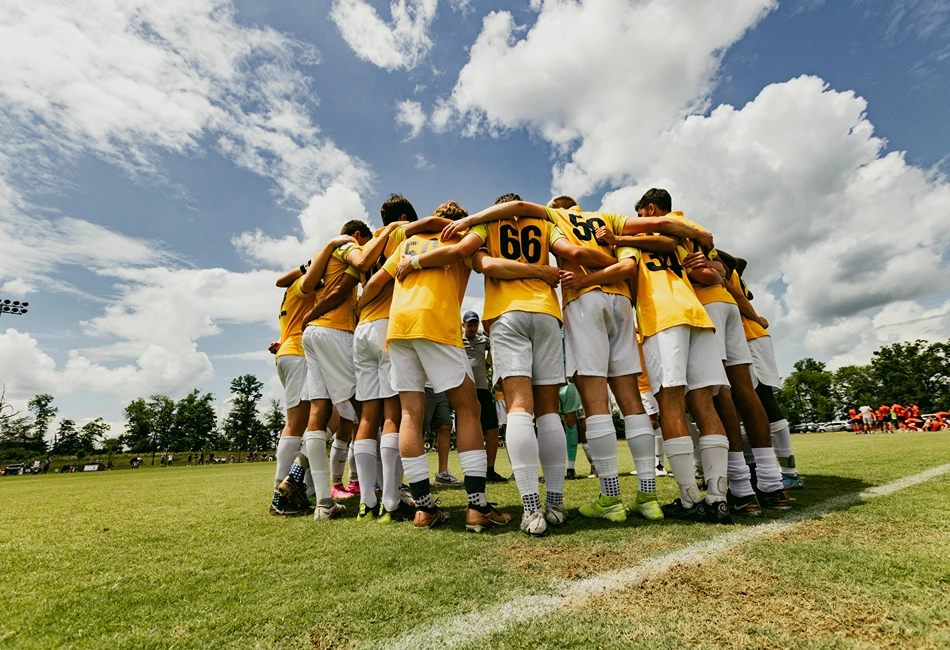Exploring soccer’s growth, global stars and America’s legacy as FIFA World Cup 26 co-host
By Christopher D. Silbernagel
In 2026, the United States will be part of a trio of nations to host the FIFA World Cup—the first time in history more than two nations co-host the world’s most-watched sporting event. It’s been a long time since the U.S. first hosted back in 1994, and a lot has changed since then for the soccer spectacle. Stars have come and gone, others are beginning to burn while new ones emerge, new nations have been created and, of course, the game’s popularity has skyrocketed in American hearts and minds. In celebration of the big tournament, let’s explore how the World Cup’s return to North America reflects not just the sport’s global reach, but the evolution of its spirit, its stars and its ever-growing stage.
Stay ahead of 2026 tournament planning—subscribe now for exclusive World Cup venue updates and travel tips.

What has changed since 1994
Back in 1994, when the United States hosted the World Cup solo, it was more of a curiosity than a cultural milestone since soccer had yet to find a permanent place for most Americans. Stadiums were borrowed from football programs and Major League Soccer (MLS) didn’t even exist yet. However, that tournament planted the seed. The result was the birth of MLS, the expansion of youth soccer programs nationwide and the beginning of a slow, steady rise that would shape a generation.
Three decades later and the sport is no longer on the fringe. It’s part of the fabric. From youth academies feeding European leagues to packed stadiums for MLS and the National Women’s Soccer League (NWSL), soccer has matured into a self-sustaining ecosystem. The infrastructure built since 1994, with “soccer-specific stadiums” and modernized training centers, has elevated both the professional and amateur sides of the sport. Destinations now compete to host friendlies, international club tournaments and more, understanding that the visitor impact rivals that of major U.S. sports leagues.
Media has also transformed the experience, with global broadcasts and social media delivering instant connection to a multitude of competitions. Soccer has become omnipresent; woven through pop culture, lifestyle and even travel decisions.
Current and emerging stars
Every World Cup writes its story through its stars. In 1994, the world marveled at legends like Italy’s Roberto Baggio, Bulgarian hero and co-top scorer Hristo Stoichkov and Brazil’s Romário, winner of the Best Player award.
Today, the torch has passed to icons like Lionel Messi, who will very likely be taking his final World Cup bow, and Kylian Mbappé, the heir apparent whose brilliance has bridged generations. Erling Haaland, though his Norwegian squad didn’t qualify in 2022, remains the sport’s most powerful symbol of how talent transcends borders and fandom. On the American front, Christian Pulisic embodies the technical quality that earlier eras dreamed of producing.
Of course, World Cup magic lies just as much in the stars we don’t know yet, and 2026 will introduce a new wave of wonderkids set to explode. Spain’s teenage phenoms Lamine Yamal, two-time consecutive winner of the Kopa Trophy for best player under 21, and defenseman Pau Cubarsí are already dazzling Barcelona fans with maturity beyond their years. Let’s not forget Brazil’s Estêvão Willian, who has many calling Messinho—affectionately “little Messi”—for his creative spark, as well as France’s Désiré Doué for his dynamic midfield play. Of course there are many more, and perhaps some whom we may not have even considered will emerge on the biggest stage.
The rise of these types of players in the modern era also underscores something that goes beyond talent. In a sport once defined by nations, fans now rally around individuals, not just a flag. A teen in Chicago might wear a Yamal jersey while streaming La Liga highlights, just as a fan in Tokyo might follow Pulisic’s performances with AC Milan. That borderless fandom amplifies the World Cup’s energy, turning host cities into global meeting points of culture and identity.

Expectations for the United States
The 1994 World Cup changed the trajectory of soccer in the U.S., and 2026 will test how far that trajectory can climb. As co-host with Mexico and Canada—the first time more than two nations have co-hosted a World Cup—the United States carries both opportunity and expectation to deliver a seamless global event and to capture the momentum that follows. The infrastructure is already in place, with NFL-caliber venues, some of which are built with soccer just as much in mind, modern transportation systems and tourism economies capable of welcoming millions. A question remains: How will this moment redefine soccer’s future in America?
If 1994 built the foundation, 2026 could be the breakthrough. With record youth participation, as seen with an incredible amount of soccer fields being added nationwide, and the fastest-growing professional leagues in North America, the U.S. stands ready to convert excitement into a legacy. We will naturally see long-term investments in multipurpose stadiums and upgraded training facilities, with ripple effects on hotels, restaurants and more for destinations, likely not only hosts but those surrounding them.
The real challenge though will be cultural. FIFA World Cup 26 will draw visitors from every continent, offering the U.S. a chance to showcase its venues, diversity, hospitality and creativity. America will have to prove that it can be both a gracious host and a permanent home for the world’s game, which will be no easy feat.
Want insider access to World Cup 2026 insights? Sign up here and get planning resources straight to your inbox.
Main image: Lionel Messi of Inter Miami celebrates another goal to his tally. Photo courtesy of Inter Miami CF.



